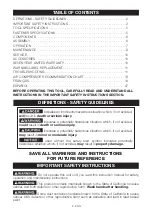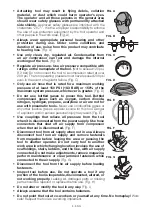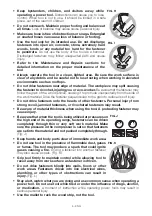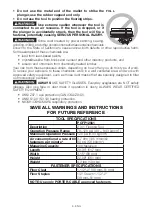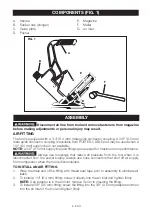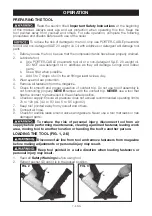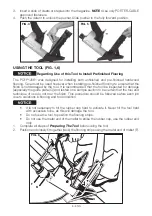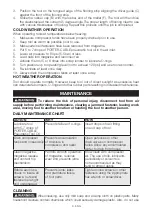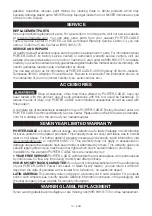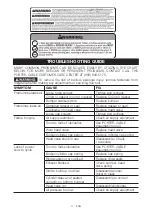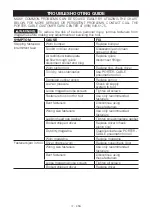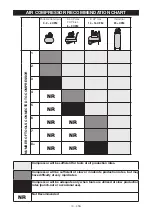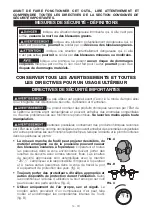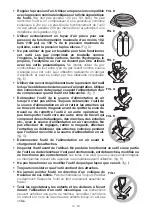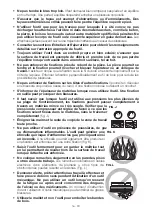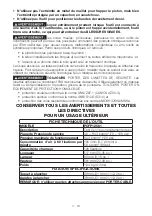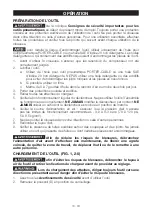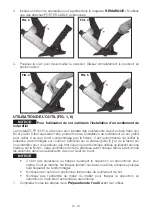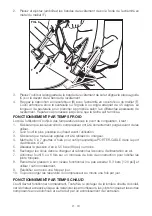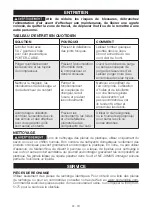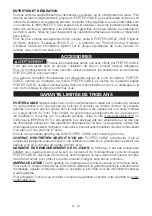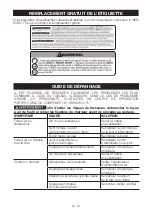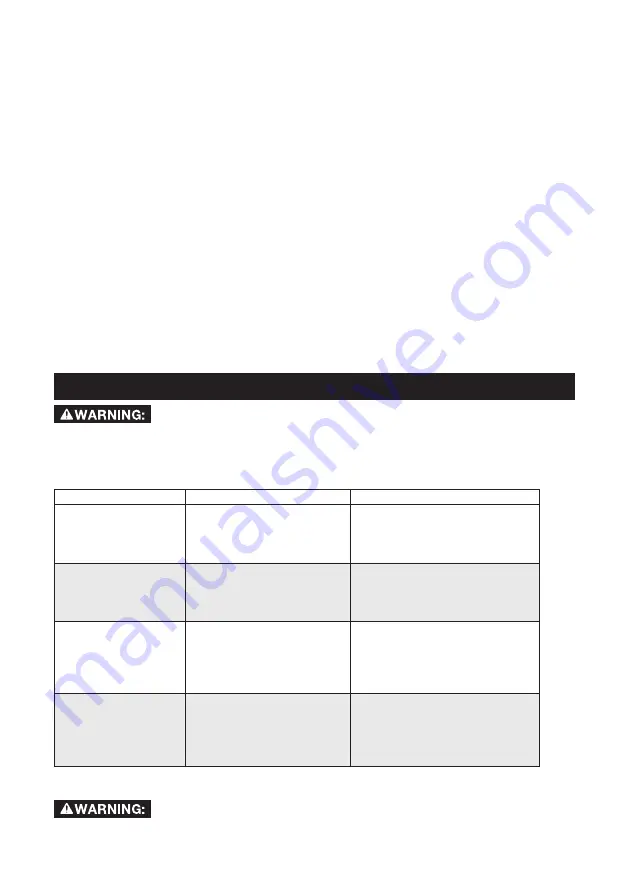
9 - ENG
3 . Position the tool on the tongued edge of the flooring strip aligning the driver guide (C)
against the front of the flooring strip .
4 . Strike the rubber cap (B) with the rubber end of the mallet (F) . The tool will then drive
the cleat/staple at the correct 45 degree angle .The proper length of flooring cleat to use
with various thicknesses of flooring . Repeat this process until the job is completed .
COLD WEATHER OPERATION
When operating tools at temperatures below freezing:
1 . Make sure compressor tanks have been properly drained prior to use .
2 . Keep tool as warm as possible prior to use .
3 . Make certain all fasteners have been removed from magazine .
4 . Put 5 to 7 drops of PORTER-CABLE pneumatic tool oil in the air inlet .
5 . Lower air pressure to 80 psi (5 .5 bar) or less .
6 . Load nails into magazine and reconnect air .
7 . Actuate the tool 5 or 6 times into scrap lumber to lubricate O-rings .
8 . Turn pressure up to operating level (not to exceed 120 psi) and use tool as normal .
9 . Re-lubricate at least once daily .
10 . Always drain the compressor tanks at least once a day .
HOT WEATHER OPERATION
Tool should operate normally . However, keep tool out of direct sunlight as excessive heat
can deteriorate bumpers, O-rings and other rubber parts resulting in increased maintenance .
MAINTENANCE
To reduce the risk of personal injury, disconnect tool from air
supply before performing maintenance, clearing a jammed fastener, leaving work
area, moving tool to another location or handing the tool to another person.
DAILY MAINTENANCE CHART
ACTION
WHY
HOW
Lubricate tool
with 5-7 drops of
PORTER-CABLE
Pneumatic Tool Oil
Prevents failure of o-rings
Insert drops into air fitting
on end cap of tool
Drain compressor
tanks and hoses daily
Prevents accumulation
of moisture in
compressor and nailer
Open petcocks or other
drain valves on compressor
tanks . Allow any accumulated
water to drain from hoses
Clean magazine,
magazine release
and contact trip
mechanism .
Permits smooth operation
of magazine, reduces
wear and prevents jams .
Blow clean with compressor
air . The use of oils, lubricants
periodically or solvents is
not recommended as they
tend to attract debris .
Before each use,
check to insure all
screws, nuts and
fasteners are tight
and undamaged .
Prevents jams, leaks
and premature failure
of tool parts .
Tighten loose screws or other
fasteners using the appropriate
hex wrench or screwdriver .
CLEANING
When cleaning, use only mild soap and a damp cloth on plastic parts . Many
household cleaners contain chemicals which could seriously damage plastic . Also, do not use


